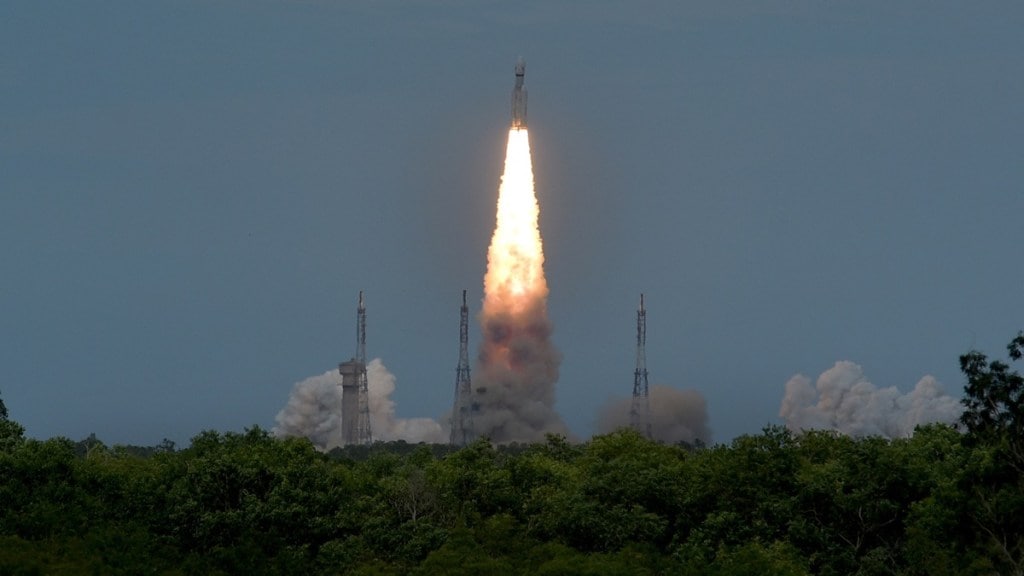The Chandrayaan-3 spacecraft, which has covered approximately two-thirds of the distance to the Moon since its launch, achieved a significant milestone by successfully entering the Lunar orbit on Saturday.
The primary objectives of Chandrayaan-3 are a safe and soft landing, rover exploration on the Moon’s surface, and conducting in-situ scientific experiments. The mission’s approved cost is Rs. 250 crores, excluding the Launch Vehicle Cost. Thus it is imperative that the spacecraft is able to achieve and perform all stages successfully in space. And this is where the sling-shot mechanism came into the picture.
Chandrayaan-3 Mission: Why was the sling-shot mechanism used?
Former ISRO scientist Tapan Mishra praised the mission as an exemplar of India’s advancements in space exploration. Talking to ANI, Former ISRO Scientist Tapan Mishra explained that India’s launch vehicles are not as powerful as required to attain the necessary velocity of 11.2 km/s once they leave Earth. To overcome this limitation, they employed the sling-slot mechanism. On the same day, ISRO’s official Twitter account confirmed the successful insertion of Chandrayaan-3 into the lunar orbit, with the next operation scheduled for August 6, 2023, to reduce the orbit further.
Chandrayaan-3 is India’s third lunar exploration mission and was launched on July 14 using the GSLV Mark 3 (LVM 3) heavy-lift launch vehicle from the Satish Dhawan Space Centre in Andhra Pradesh’s Sriharikota. Once it lands on the Moon, it will operate for approximately 14 Earth days, equivalent to one lunar day.
The spacecraft’s components include various electronic and mechanical subsystems designed to ensure a safe and soft landing, such as navigation sensors, propulsion systems, guidance and control systems, and others. It also contains mechanisms for the release of a Rover, two-way communication antennas, and other onboard electronics.
Chandrayaan-3 is ISRO‘s follow-up attempt after the Chandrayaan-2 mission faced challenges during its soft landing on the lunar surface in 2019 and was ultimately considered to have failed its core mission objectives.
Some key scientific outcomes from Chandrayaan-2 include the first-ever global map of lunar sodium, enhanced knowledge of crater size distribution, and the definitive detection of lunar surface water ice using the IIRS instrument, among others.
A successful lunar mission by India holds significance as the Moon stores Earth’s past and such achievements will contribute to enhancing life on Earth and provide opportunities for exploring the rest of the solar system and beyond.
